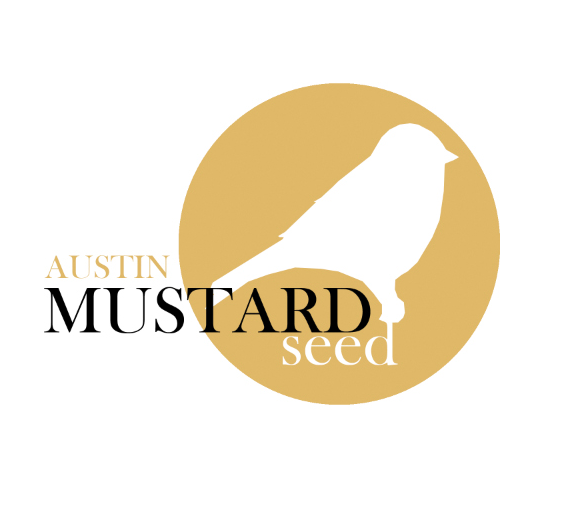“The fact is, we’ll never be able to out-entertain the surrounding world.”
The words came from a frustrated youth minister friend. They could have come from anyone who’s ever tried to organize a church worship service.
For Austin Mustard Seed, nestled in the live music capital of the world, we know that we’ll never have the capacity to put on a major production.
That was never our job, anyways.
Defining Liturgy

Liturgy has a number of meanings, both technical and colloquial. Technically, it is used to describe any pre-written or predetermined ritual. A common definition for the word liturgy is “the work of the people.”
Those of us from a low church background may cringe at the word liturgy. However, we must admit that all groups, secular or religious, high church or low church, have common practices, jargon, and sequences.
We all have liturgy. So we need to do it well.
How about this definition of Liturgy: A moment set aside to rehearse being disciples of Jesus together. (Tweet this)
10 Steps to Creating a Participatory Liturgy
How then, do you create a liturgy that helps your community in its quest for discipleship? These steps are universal, and can be applied in any church structure denomination or context. The result, however, will reflect your community.
1. Choose the elements
Everyone has a liturgy. Not everyone puts thoughtful reflection into what elements should be a part of your time together.
The liturgical experience should be designed to represent your theological distinctives, honor your contexts and engage your participants.
Start with these three questions:
- The Theological Question — What truths about the way of Jesus should we focus on together?
- The Contextual Question — What forms already found in our surrounding culture can be utilized to express these truths?
- The Participatory Question — What does it mean to engage those who gather?
2. Determine level of participation
The next step will be to create a framework that allows you to engage participants in the elements of the liturgy. There are three main levels.
- High Participation is very freeform. Anyone can share a thought, prayer request or lead in musical worship. This requires a simple format and minimal facilitation. It generally works well in small groups and house churches.
- Low Participation is a well executed, highly produced event. It relies on trained experts to lead worship, preach, provide technological support, etc. Non-professionals participate by singing along, taking notes, etc. To varying levels, most mainstream churches operate this way.
- Medium Participation is grounded in an expected order and relies heavily on guidance. Individuals are given tasks to lead, such as prayers, serving communion or sharing from scripture. Official leaders are primarily guides and directors, providing prayers, technological tools, and training.
At Austin Mustard Seed, we are always learning how to be a “we.” Our liturgy uses Medium Participation because we want to make it easy for as many people as possible to be heard. Paul says that “When you come together, each of you has a hymn, or a word of instruction, a revelation, a tongue or an interpretation.” This is how we are living out 1 Corinthians 14:26 in our context.
3. Map out the flow
The order of worship is the flow of events that describes how the time together will be spent. Will there be songs? Prayers? A meal? A skit? A labyrinth?
Three factors help you decide this question:
A) Theology—What do you believe God wants a gathered church to do?
B) Practicality—What can you currently do with your time, talents and budget?
C) Reproduceability—Is this something you can do every single week?
There’s no need to start from scratch. Churches have been doing this for hundreds of years. Draw from your tradition and others using resources such as the denominational hymnals, Quaker Meeting Guides, Catholic Mass, The Anglican Book of Common Prayer and the Methodist Order of Worship.
Austin Mustard Seed uses a format that we adopted from Vox Veniae, who I believe adapted it from various Presbyterian traditions. It includes:
- Call to Worship (musical and written prayer)
- Two Songs
- Prayer of Confession (responsive)
- Announcements
- Break time (a very long version of “passing the peace” that includes good coffee)
- Preaching
- Prayers of the People (an open-mic, responsive prayer)
- Eucharist
- Two Songs
- Benediction
4. Choose a theme
Life is too busy and gatherings are too meaningful just to throw something together a guide will help. Most churches use a combination of the three.
- Church Calendar (Allowing the Liturgical Calendar and the Lectionary to determine themes and texts)
- Series (Sermon series chosen by church leadership provide inspiration for other worship elements)
- One-off (Leaving space for covering specific topics or responding to felt needs)
5. Curate
The week-to-week work of preparing your Church’s gathering will be mostly curation. This means finding elements that fit with the goals and format you have chosen.
Curation is the moment when you begin to involve the broader community. You might build a curation team to find new songs, classic prayers or useful pieces of art.
We use pre-written prayers at Austin Mustard Seed. Our curation means digging through resources to find prayers that fit our current foci. Your Church may include talented poets or musicians that can help you create your own resources.
One classic resource is the Book of Common Prayer. Recent additions would be the book Common Prayer: A Liturgy for Ordinary Radicals and the video series Alter and The Work of the People. There are also a number of liturgical resources across the web, such as the re-worship blog.
6. Build and Proof
If you are a traditional church that uses hymnals and prayer books, please disregard this section.
For the rest of us, welcome to the joy of worship tech! We project the words to slides and written prayers. We collect all of our prayers and songs in a word processor document and then copy and paste them into slides. Although there is some great software out there, we find that the simplicity of a linear presentation tool like Keynote is better for us than having a lot of bells and whistles.
Since I am notoriously un-detail-oriented, I rely heavily on proofreaders to check for grammar mistakes and consistency. It’s a great way to let others participate and learn about curation.
7. Invite
Congratulations on completing the “thought work” of steps 1-6. Now, for the fun part: participation.
Choose individuals and invite to participate in your various liturgy elements. You’ll want to keep a running list of people who are comfortable in front of a crowd, and expect to coach them along the way.
This can be done through email or even face to face. At Austin Mustard Seed, we have found Planning Center Online to be invaluable for allowing us to easily recruit and track participants. We replicate the same order of worship, upload unique documents (our pre-written prayers) and invite people to join in.
8. Run Through
If you’ve been planning a Liturgy, chances are, you may have every element mapped out in your head. Your participants do not.
Pull everyone aside for 10 minutes before your gathering starts to answer questions, make sure people understand their task and say a prayer.
9. Explain
At the bottom of the first page of every Spider-man comic, you’ll see a box explaining that Peter Parker was bitten by a radioactive spider. Why? Because Spider-man’s creator Stan Lee operated from the philosophy that every comic was someone’s first comic.
At Austin Mustard Seed, we want to welcome outsiders to our gathering. We also take the opportunity to be reminded about why we have gathered. We use the following preamble to our Call to Worship:
Welcome to the Liturgy of Austin Mustard Seed.
The word “liturgy” means “The Work of the People.”
Friends and strangers.
Passionate believers.
Hopeful skeptics.
For this short moment, we are all participants and hosts.
Let us stand together for a moment of quiet.
10. Repeat
My co-planter John Chandler has shared this frustration about pulling off events like Easter when he worked at a mega-church: “It always felt like we had to bigger and better than the year before.” This pressure not only can lead to burn out, but it does not ensure creativity.
A somewhat surprising value of using a set liturgical form is how it creates a space in which to be creative. New songs are written, ancient prayers are revived and new voices are heard.
Stick with your format. Use it again and again. If you continue to create and curate, it will never get boring.
Every church community has an official or unofficial liturgy. What is yours? How does it include and inspire?
Please share this post on Facebook or Twitter.


















 Tweets
Tweets